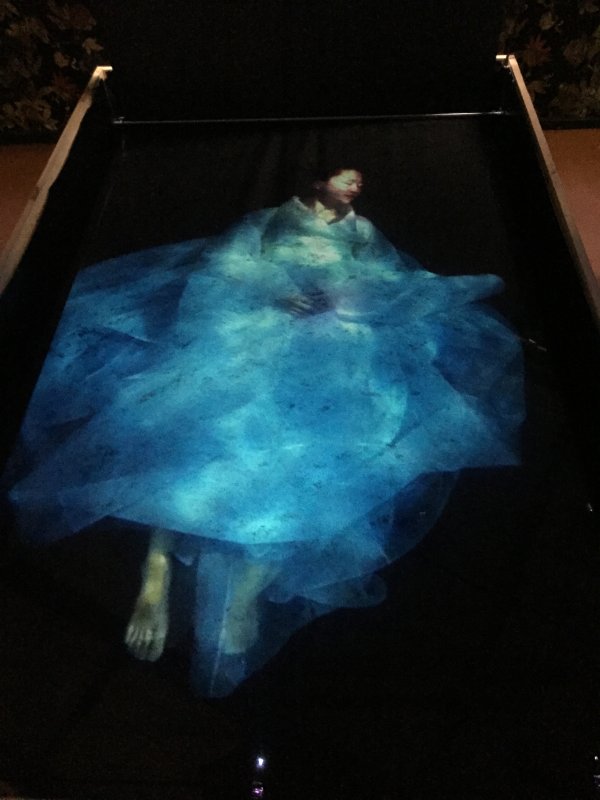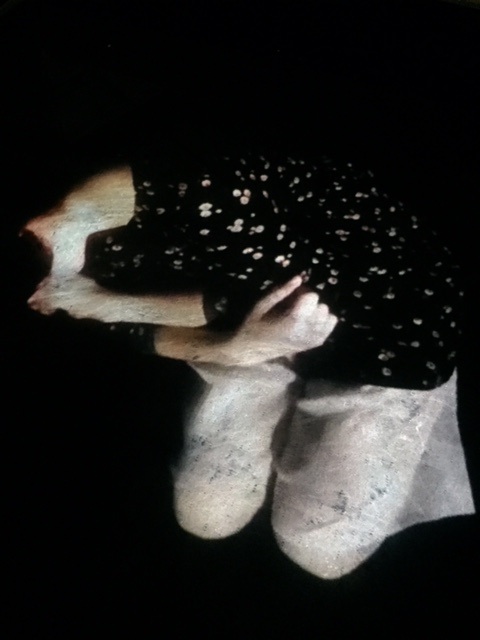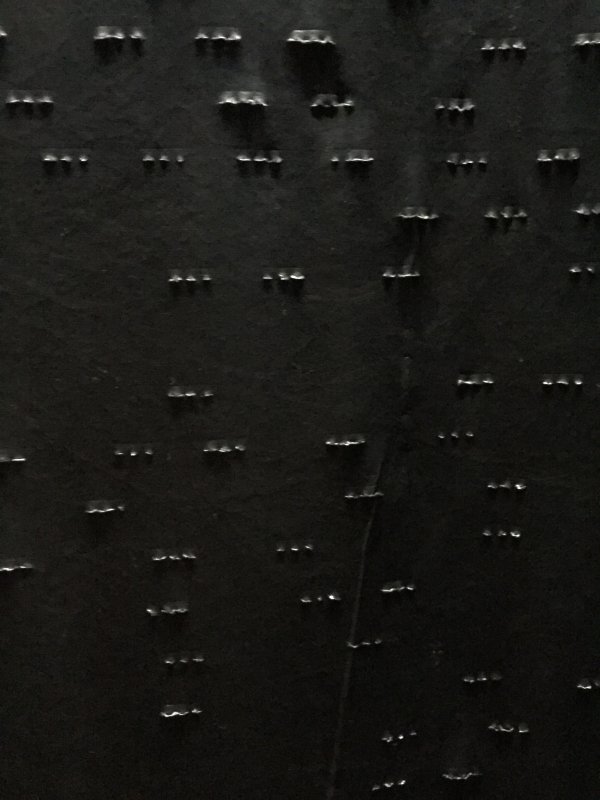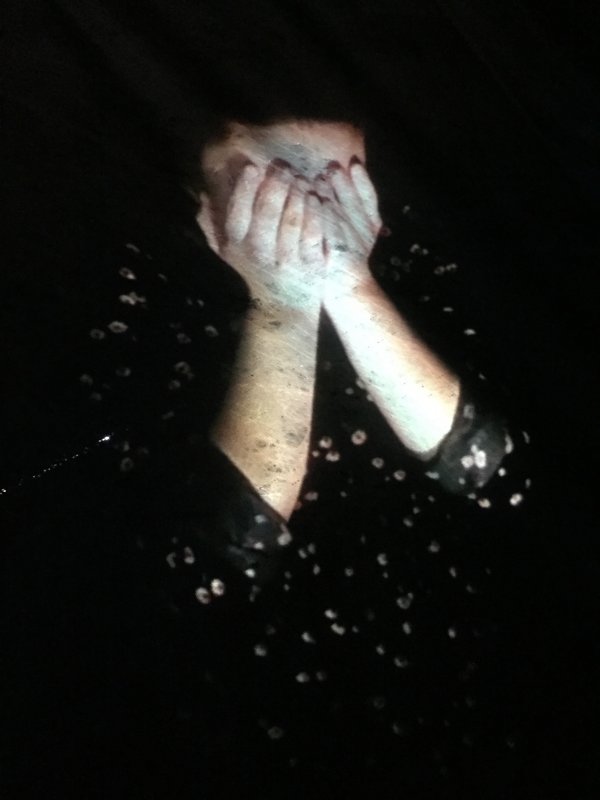It’s dark inside the Currents New Media exhibition hall. I navigate a path that steers clear of wall mounted screens of exploding color and groups of people lying on the floor, or holding cables and interacting with devices, and children waving arms, their movements projected on the wall, watching themselves while their parents watch them. I want to be absorbed in someone else’s story and not watch myself, for a minute. I want to get lost. Take me to the cinema but let me drift in and out of focus. I make my way to a room within the hall. In an arena of special effects, audio-visual escape, transcendence, humor and irony I am drawn to the tragic and intimate. Ha Na Lee and James Hughes’ new media installation Two Women is a fragmented, poetic narrative based on the suicide of Lee’s grandmother. It is dark, too depressing according to Korean friends of Hughes and Lee, who reviewed the installation prior to its premier at the festival
Two women: one is young, angelic, billowing and dream like; the other alternates between the fetal position and the floating corpse pose.

 Side by side, the wood framed vessels into which the the images are projected and submerged in water, read as both boat and coffin. Like flowers dropped from the installation’s peeling wallpaper or the Chinese screens described by the narrator as she recounts a dream that turns into a nightmare, the water is the source of life of death. What doesn’t kill you makes you strong. In Two Women, the gasping for air is visceral as the older woman contorts her body and I, the witness, listen to her story in Korean, read it in English and hear the stylus punctuate it into fabric as Morse code, the universal language associated with distress. Lee’s grandmother is a ship lost at sea, still transmitting, her story, carried through time by memory and repetition.
Side by side, the wood framed vessels into which the the images are projected and submerged in water, read as both boat and coffin. Like flowers dropped from the installation’s peeling wallpaper or the Chinese screens described by the narrator as she recounts a dream that turns into a nightmare, the water is the source of life of death. What doesn’t kill you makes you strong. In Two Women, the gasping for air is visceral as the older woman contorts her body and I, the witness, listen to her story in Korean, read it in English and hear the stylus punctuate it into fabric as Morse code, the universal language associated with distress. Lee’s grandmother is a ship lost at sea, still transmitting, her story, carried through time by memory and repetition.

 The hows and whys of Two Women are endless. The story of Lee’s grandmother becomes Ophelia’s story and the question of madness. It transcends gender and becomes the story of the veteran with post-traumatic stress or the overworked software engineer working for Samsung. The installation glances at the past is at first beautiful light-filled and cinematic. It lures me into the environment where I witness the psychic collision of cultural compliance, repression and the gasping for air required to save oneself from systems that hover between security and a chokehold.
The hows and whys of Two Women are endless. The story of Lee’s grandmother becomes Ophelia’s story and the question of madness. It transcends gender and becomes the story of the veteran with post-traumatic stress or the overworked software engineer working for Samsung. The installation glances at the past is at first beautiful light-filled and cinematic. It lures me into the environment where I witness the psychic collision of cultural compliance, repression and the gasping for air required to save oneself from systems that hover between security and a chokehold.

 Lee’s story alludes to the dis-connect in the soul that transcends software and logical systems of communication. “The work explores several possible ways to understand her death:kinetic machines tabulate and archive suicide-related data; channels of video portray images such as a drowning woman, narration is by an elderly woman who describes her room, a dream about a room with machines, and a fantasy of her younger self drowning”wrote Lee and Hughes in their statement accompanying the installation.
Lee’s story alludes to the dis-connect in the soul that transcends software and logical systems of communication. “The work explores several possible ways to understand her death:kinetic machines tabulate and archive suicide-related data; channels of video portray images such as a drowning woman, narration is by an elderly woman who describes her room, a dream about a room with machines, and a fantasy of her younger self drowning”wrote Lee and Hughes in their statement accompanying the installation.
29 out of 100 deaths in Korea are attributed to suicide, ranking it among the highest suicide rate per capita in the industrialized world. Despite Korea’s technological innovation and global contributions toward connectivity and access to a collective voice, we still have Lee’s story of her grandmother’s suicide echoing through. Home to Samsung and Hyundai, social progress and affluence haven’t cured alienation in Korea, or elsewhere. Ironically, reports of suicides are frequently censored or underplayed by the media in order to prevent a wave effect of more sucides. https://data.oecd.org/healthstat/suicide-rates.htm
In The Dang-Daily News, October 3, 1933, a woman throws herself in front of a train. “The situation was terrible and unbearable to witness. “ Distress. SOS. The ship goes down and memory keeps tapping. Lee and Hughes installation glances at the past, yearns for understanding, but confronts the unknowable with cool media force- newsreports, film, personal story, theatrical lighting, language, code. Two Women becomes the story of despair, futility and the persistance of the unknown regarding the emotional life of another, no matter how many systems we put in place. I, like the narrator, listen for my own scream, the collective scream, the scream that cannot be tabulated, coded, predicted or understood no matter how much data is collected.
